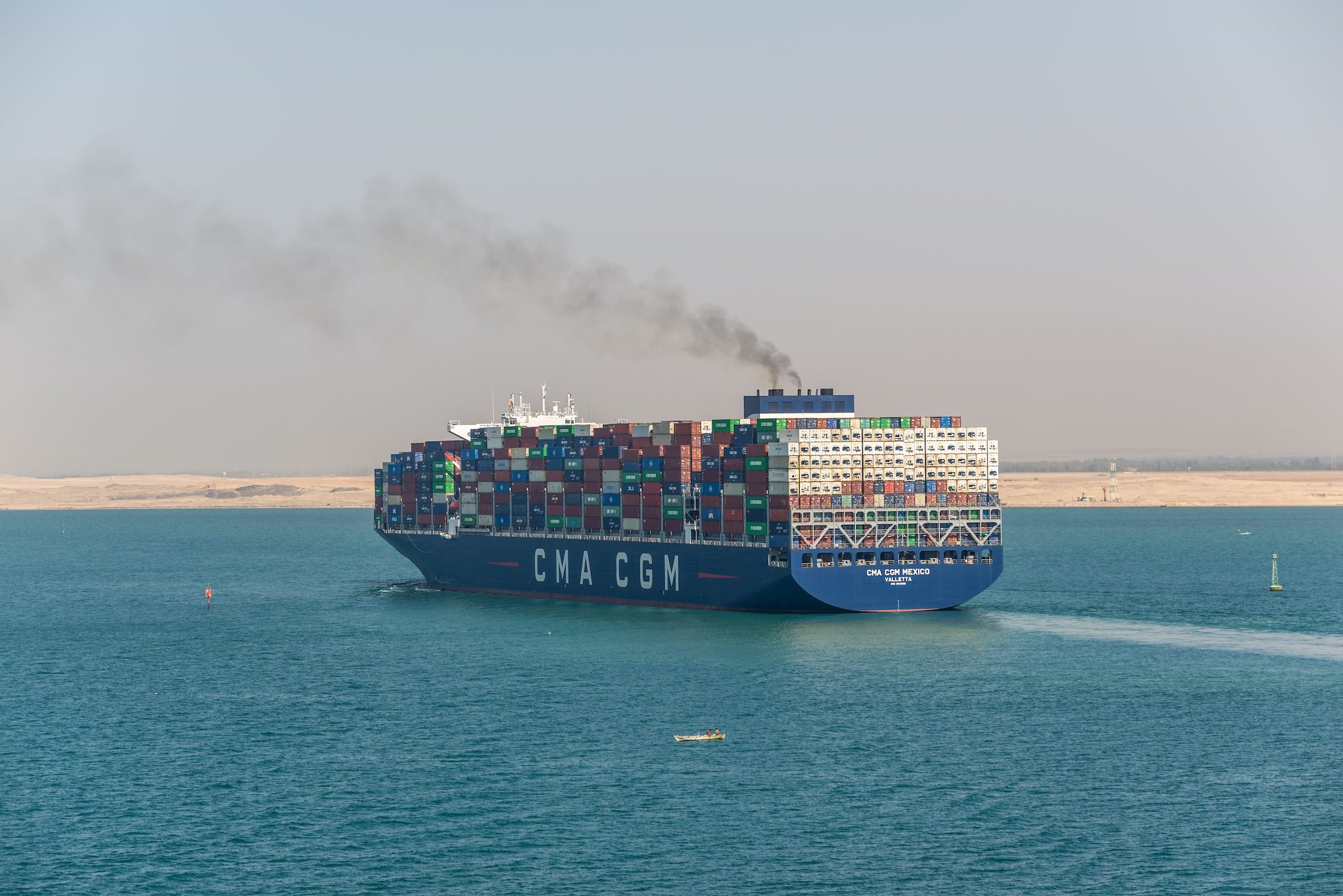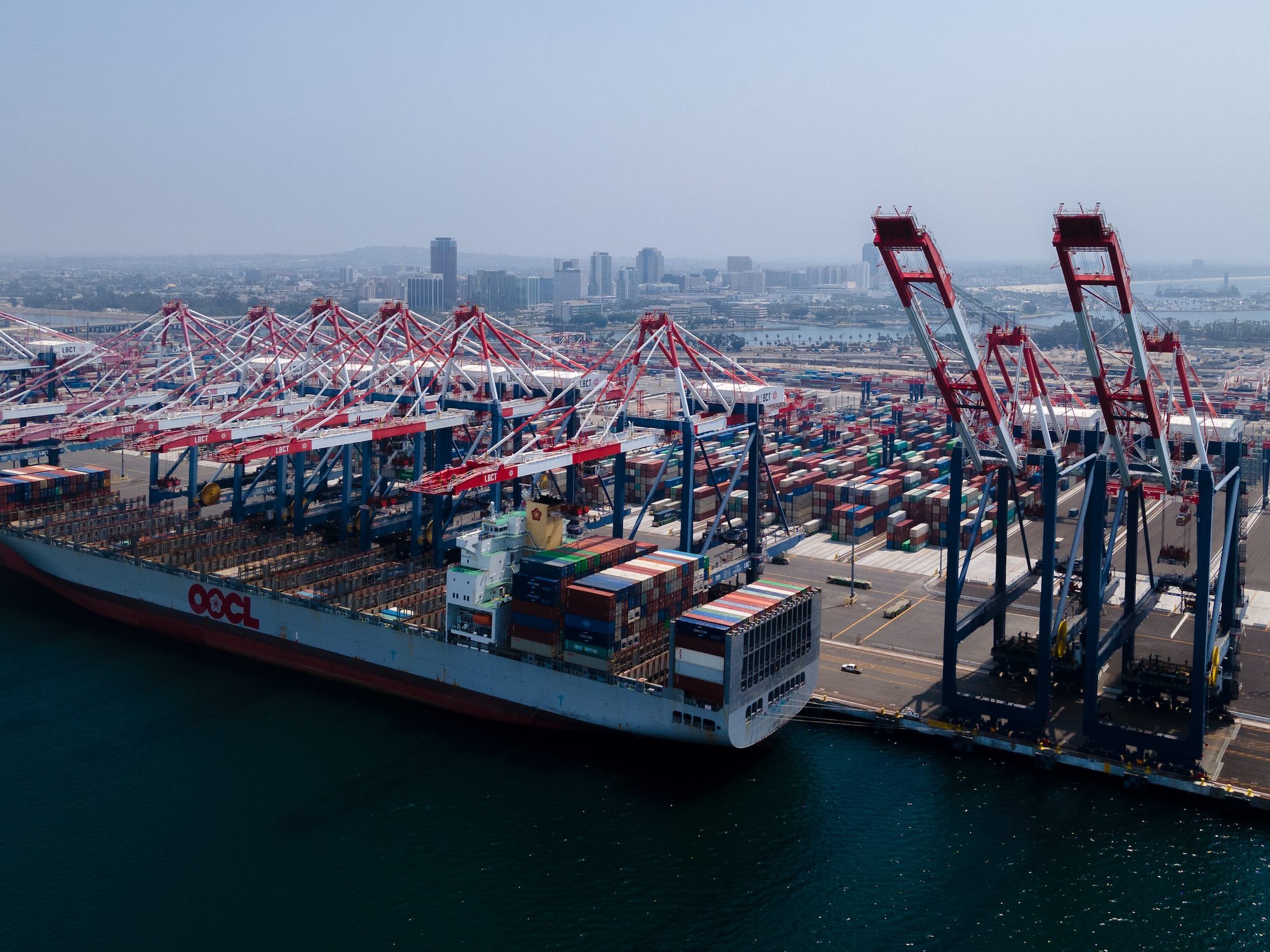By Brendan Murray (Bloomberg) —
Spot rates for shipping containers fell for the first time in almost three months amid signs demand is cooling after US tariffs on Chinese goods and other trade disruptions sparked an earlier-than-usual peak season for restocking.
The Drewry World Container Index composite of eight major trade lanes dropped 2.2% to $5,806 for a 40-foot unit, snapping a 12-week-long advance, according to figures released Thursday. That’s still about three times higher than the rate posted at the end of 2023 — when cargo ships started diverting en masse away from the Red Sea to avoid Houthi attacks.
Rates surged unexpectedly in the second quarter on strong US demand for goods as importers raced to stock up ahead of higher American tariffs on Chinese products, and as concerns grew about a dockworker strike on the East and Gulf Coasts later this year. The momentum is now showing signs of fading.
The benchmark Shanghai-to-Los Angeles rate dropped for a second straight week, sinking 4.9% to $6,934. Shanghai to Rotterdam was little changed at $8,260, Drewry’s figures showed.
Those prices mirror the softening of a tight market reflected in short-term container rates released earlier this week by Freightos, a cargo-booking platform. Spot rates that include premiums and surcharges on Asia-US West Coast services fell 4% to $7,738, while the cost to northern Europe from Asia sank 2% to $8,420, according to Freightos.
Ups and Downs
The Port of Los Angeles and Long Beach, the busiest US gateway for maritime trade, posted solid increases in container volumes during the first half of 2024 from a year earlier. So did Europe’s two largest container ports — Rotterdam and Antwerp-Bruges.
On top of the healthy demand were capacity constraints tied to the Red Sea turmoil and vessel diversions around the Cape of Good Hope, which in turn sparked port congestion at shipping hubs including Singapore.
Some of those supply snarls are easing. According to industry figures as of Tuesday, wait times for berth space in Singapore — the world’s biggest transshipment hub — ranged from 50 to 80 hours, down from 70 to 110 hours in mid-June.
Tide Turns
Judah Levine, head of research at Freightos, said during a webcast circulated this week that there are signs supply and demand are closer to balanced than they have been over the past few months.
“Taken all together, the additional capacity in the main trade lanes from improving congestion and from carriers adding more services, taken together with demand which might be peaking just now or in the next few weeks, these could be factors for some speculation in the market that rates may have already reached their peak,” Levine said.
He said a stretch of peak season surcharges and general rate increases imposed by the shipping lines for freight to the US and Europe from Asia appears to have stopped, at least through August.
Daily quoted rates are “ticking down” and there are reports that carriers are offering rate reductions, Levine added.
© 2024 Bloomberg L.P.

 Join The Club
Join The Club











